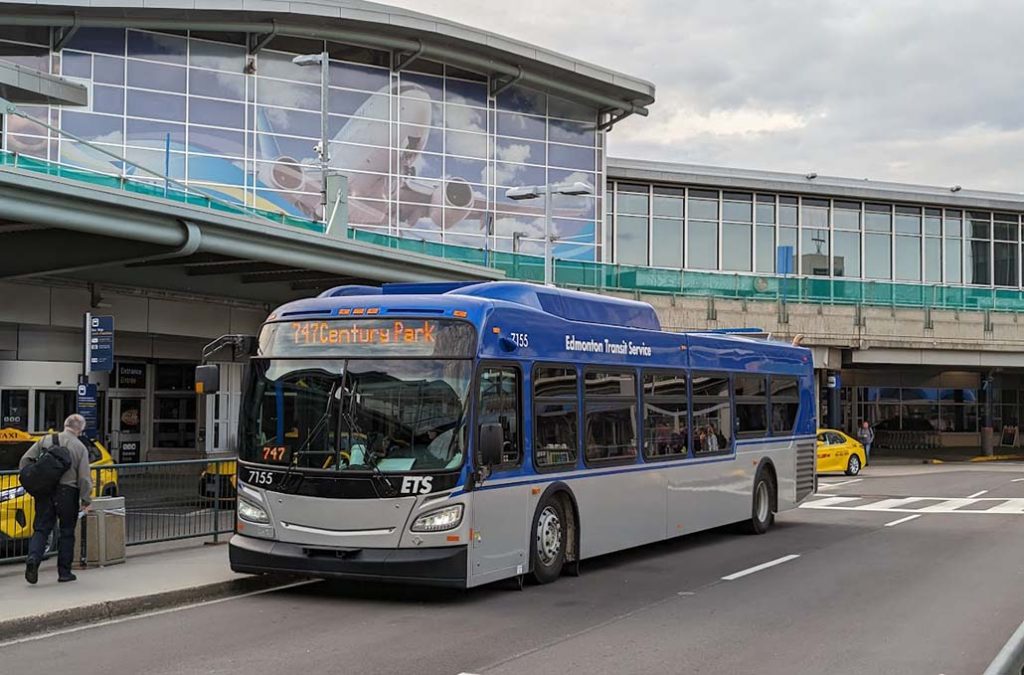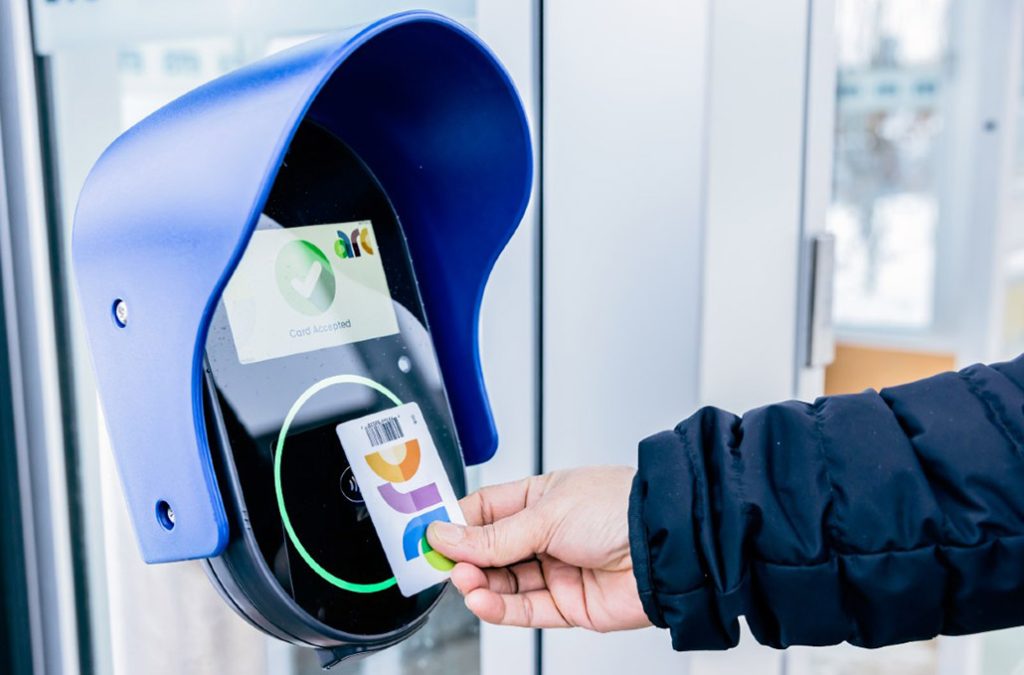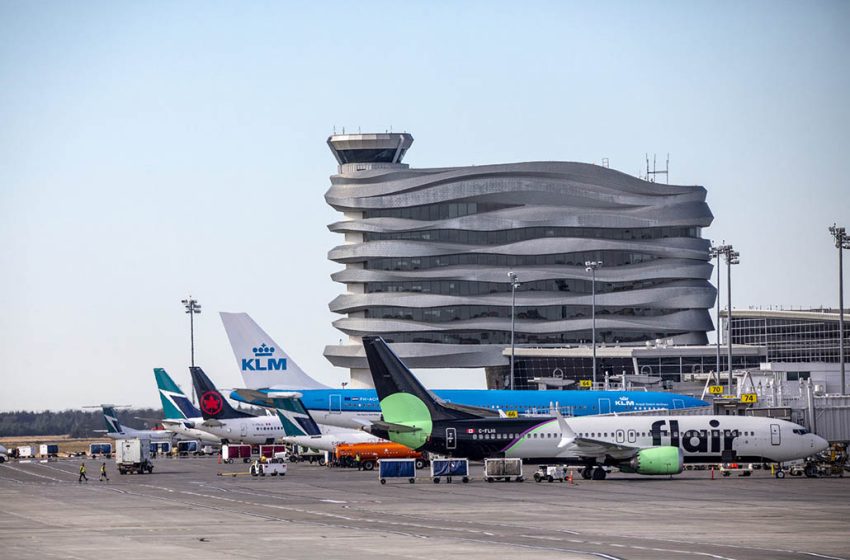Edmonton, the capital city of Alberta, Canada, blends modernity with natural beauty. Whether you’re here for business or leisure, knowing the basics about the city’s transportation system and other essential information will make your trip smoother and more enjoyable. This comprehensive guide is designed for first-time visitors to Edmonton, covering the various transportation options from the airport to the city, the transit card system, weather conditions, and packing tips to help you navigate this vibrant city with ease.
1. Transportation from the Airport to Downtown
Edmonton’s primary international airport is Edmonton International Airport (YEG), located about 30 kilometers from downtown. The travel time from the airport to the city center varies from 20 to 40 minutes depending on the mode of transportation. Here are the most common options:
1.1 Airport Shuttle
The Edmonton Sky Shuttle provides a bus service that connects Edmonton International Airport to various points in downtown, including popular hotels, shopping centers, and tourist attractions. The journey takes about 30 minutes, and the fare is around CAD 18. This option is ideal for travelers who aren’t in a rush, as the shuttle usually has enough seating and provides a comfortable ride.
Advantages:
- More affordable than a taxi
- Offers air conditioning and free Wi-Fi
- Covers several downtown areas for easy drop-offs
Disadvantages:
- The journey may take longer due to multiple stops
1.2 Taxi
Taxis are another convenient option, with fares from the airport to downtown typically costing around CAD 55. A taxi ride usually takes about 30 minutes, though it can take longer during busy traffic times. This is a good choice for those with a lot of luggage or who arrive at night.
Advantages:
- Direct route to downtown without any stops
- Convenient, especially late at night or early morning
Disadvantages:
- Higher cost
- Traffic congestion during peak hours
1.3 Car Rental
For visitors planning to explore the city or nearby areas on their own, renting a car provides flexibility. Multiple international car rental companies, such as Hertz, Avis, and Budget, operate at the airport. Rental prices start around CAD 40 per day, depending on the model and insurance options.
Advantages:
- High flexibility to explore the city and surrounding areas at your own pace
- Various car types available to meet different needs
Disadvantages:
- Requires driving experience, especially for those unfamiliar with right-hand driving
- You need to deal with parking issues
1.4 Hotel Shuttle and Airport Transfer
Some high-end hotels, such as the Fairmont Hotel Macdonald, offer free or paid airport transfer services. You can check if your hotel offers this service when booking or arrange for it when you arrive at the airport.

Advantages:
- Comfortable and convenient
- Direct transfer to your hotel
Disadvantages:
- Only available at select hotels, and often requires advance booking
1.5 Public Bus
Edmonton’s public transportation system also includes bus services from the airport to downtown. The 747 bus route connects Edmonton International Airport to major transit hubs in downtown. The fare is around CAD 10, and the journey takes about 35 to 40 minutes. This option is ideal for budget-conscious travelers.
Advantages:
- The most economical option
- A chance to experience local public transportation
Disadvantages:
- Not ideal for carrying large amounts of luggage
- The journey can be longer compared to other options
2. Edmonton Transit Card Guide
Edmonton’s public transportation system is operated by Edmonton Transit Service (ETS), which includes buses and light rail. To make travel easier for both visitors and residents, ETS offers several transit card options designed to simplify commuting and improve accessibility. Whether you’re staying for a short visit or an extended stay, understanding the various options can help you save money and make your journey more convenient.
2.1 ETS Smart Card
The ETS Smart Card is the most common form of payment for public transportation in Edmonton. Visitors can purchase the card easily at ticket vending machines at bus and light rail stations or from designated retailers around the city. This versatile card can be used on both the bus and light rail systems, with a single ride typically costing around CAD 3.50. If you’re staying in Edmonton for a few days, using the smart card is both convenient and cost-effective, as you don’t have to worry about buying a ticket for each ride. The card can be reloaded with funds as needed, which makes it easy to manage your transportation budget. It’s especially handy if you plan to use public transit multiple times during your stay.
How to Purchase:
- Available at ticket vending machines at bus and light rail stations throughout the city.
- Can also be purchased at designated retail outlets, including convenience stores and service centers.
How to Reload:
- You can reload your ETS Smart Card at ticket vending machines located in stations, or conveniently online via the official ETS website or mobile app.
Advantages:
- Eliminates the need to purchase individual tickets for each ride, saving time and hassle.
- Can be used on all ETS buses and light rail services, ensuring seamless travel across the city.
- It is easy to reload, providing flexibility for extended stays.
2.2 Day Pass and Weekly Pass
For tourists who plan to use public transportation multiple times, the day pass and weekly pass are often a better value than single ride tickets. A day pass, priced at CAD 9, allows for unlimited rides on all ETS buses and light rail for a 24-hour period from the time of activation. This pass is perfect for tourists who plan to explore Edmonton extensively within a day. The weekly pass, costing CAD 30, offers unlimited travel on public transport for a full seven days. It is ideal for visitors who want to stay longer and continue using public transit without worrying about individual ride costs. Both passes offer a great opportunity to explore the city while enjoying the flexibility of unlimited rides.
Advantages:
- Excellent value for money, especially for tourists who plan to travel frequently on public transport.
- Unlimited travel on both buses and light rail, which is perfect for sightseeing or those needing to commute multiple times.
- Offers convenience and flexibility, as there’s no need to purchase a new ticket each time you board.
2.3 Single Ride Ticket
For visitors who only need to use public transit occasionally or for short trips, the single ride ticket is a straightforward option. Priced at CAD 3.50 per ride, these tickets can be purchased easily from mobile apps or at ticket vending machines located in stations. Single ride tickets are ideal if you only need to take public transit occasionally or prefer not to commit to a day or weekly pass. However, for those who intend to make multiple trips in one day, this option may not be as cost-effective as the day pass.
Advantages:
- Flexible and convenient, allowing you to pay as you go.
- Perfect for short trips or those staying in the city for only a few days.
Disadvantages:
- Doesn’t offer savings for frequent travelers, and may become more expensive if you need to take multiple rides in a day.
- Requires purchasing a new ticket each time you travel.

3. Edmonton Weather and Packing Tips
Edmonton experiences a wide range of weather throughout the year, with distinct seasons. Understanding the weather patterns and dressing appropriately will ensure a comfortable travel experience.
3.1 Spring (March – May)
In spring, Edmonton’s temperatures gradually warm up, ranging from 0°C to 15°C. The weather can be unpredictable, with occasional rain or snow showers. It’s best to layer up with light jackets, sweaters, and long-sleeve shirts.
Packing Tips:
- Windbreaker or light jacket
- Layered clothing (sweater + shirt)
- Comfortable sneakers or waterproof boots
3.2 Summer (June – August)
Summer is the warmest season in Edmonton, with temperatures usually ranging from 15°C to 30°C, occasionally exceeding 30°C. Though it’s warm during the day, evenings can still feel cool, so packing lightweight clothing is recommended.
Packing Tips:
- Lightweight and breathable clothes (t-shirts, skirts, shorts)
- Sunscreen and sunglasses
- Comfortable shoes for walking
3.3 Fall (September – November)
In fall, temperatures range from 5°C to 15°C, and the weather can fluctuate between warm and cold. Edmonton’s fall foliage offers stunning views, making it a great time for sightseeing.
Packing Tips:
- Warm jacket or windbreaker
- Long pants and comfortable shoes
- A scarf for dealing with temperature fluctuations
3.4 Winter (December – February)
Winter in Edmonton is cold and long, with temperatures often dropping below -10°C, sometimes even reaching -20°C or lower. Snow is common during this time, making it an ideal season for winter sports like skiing and ice skating.
Packing Tips:
- Down jacket or heavy coat
- Warm gloves, scarves, and hats
- Non-slip boots or snow boots
Whether you’re visiting Edmonton for the first time or are already familiar with the city, having some basic travel tips at your disposal will ensure a smoother and more enjoyable journey. From the various transportation options available between the airport and the city to the flexibility of the transit card system, you can easily navigate your way through Edmonton. By also preparing for the city’s changing weather, you can pack accordingly and fully enjoy your stay in this dynamic and vibrant city.

